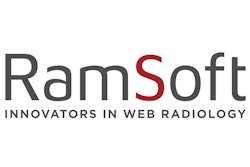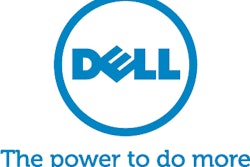
CLEVELAND - With much of PACS' cost savings attributed to the elimination of film, many PACS market watchers are convinced that further savings will require Web-based image access for referring physicians. To promote this goal, radiologists at Maine Medical Center in Portland organized a pilot program to encourage use by clinicians outside of the institution.
MMC is a 600-bed nonprofit hospital with imaging procedure volume of 180,000 exams per year. Approximately 50% of MMC's radiology referral volume is derived from non-MMC based physicians, said Dr. Matthew Ralston. He made his comments Friday during a session at the Symposium for Computer Applications in Radiology.
Since MMC's plan for return on investment (ROI) of its PACS network (implemented in 2001) relied heavily on film savings, it was critical to reduce film usage as much as possible, he said. Inside MMC, Web-based access to the images occurs primarily via general-use PCs, with the exception of intensive care units, emergency department, and selected nursing units, Ralston said. Those locations received dedicated Web PCs, equipped with only a Web browser for image access.
"Our decision to have no clinical workstations was partly a budget-conscious decision and a partly a strategic decision that the future of consolidated patient records will be Web-based," Ralston said. "It was also partly a simplifying decision, as we wanted to avoid situations where we would have to 'referee' who deserves expensive clinical workstations. It's also partly an acknowledgement of how good the Web product is."
Due to legal as well as cost concerns, MMC decided it was not able to provide PCs, networking, computer support and training to non-MMC offices, Ralston said. Instead, MMC's PACS team and radiology department worked with the institution's legal and IS departments to develop a pilot program that would provide temporary use of a Web-enabled PC and printer to non-MMC offices. In exchange, the office locations would provide space and support at their sites, as well as feedback on the system, Ralston said.
Six non-MMC offices were chosen for participation in the six-month program. These private offices generated 20% of MMC referral volume. Prior to selection, MMC screened potential participants on factors such as preexisting access through MMC's firewall and an adequate intra-office network. In addition, MMC's PACS team wanted to have one or more physicians interested in the project, as well as the ability to woo "high-profile" physicians and major surgical subspecialties, Ralston said.
A Dell PC, equipped with a 21-inch Trinitron monitor and Hewlett-Packard Laserjet printer, was furnished to the offices. After installation, group presentations and dedicated training classes were given. Limited onsite assistance was also available.
"A little personal attention goes a long way," Ralston said.
Participants signed a 17-page contract covering topics such as remote access disclaimers, password rules, downtime and troubleshooting procedures. Other inclusions discussed the responsibilities of the office for achieving connectivity with MMC, and the confidentiality of proprietary and patient information.
Typically, offices chose to locate the PCs near a cluster of examination rooms, giving nurses and doctors easy access, he said. Overall, the program successfully promoted the adoption of the system by the referring physicians.
"We got 'em hooked," Ralston said.
By Erik L. RidleyAuntMinnie.com staff writer
May 3, 2002
Related Reading
RamSoft unveils Web-based PACS, May 2, 2002
Web holds a bright future in healthcare, September 3, 2001
Copyright © 2002 AuntMinnie.com




















